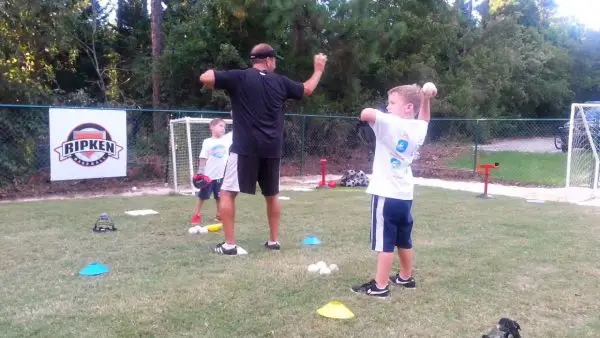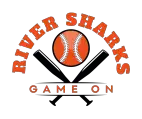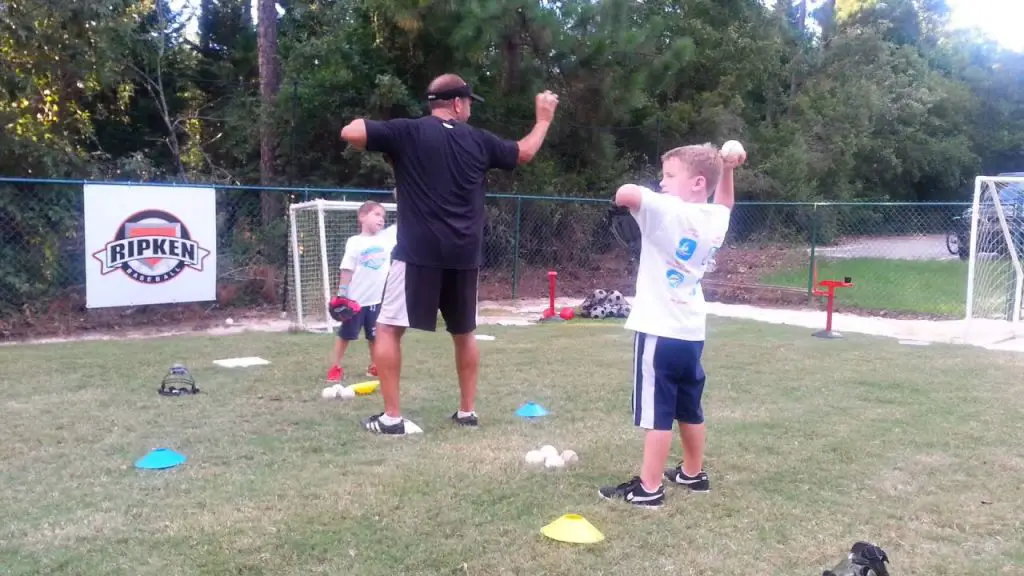10 years is about the right age to let a kid start his baseball practice. At this age, he would start swinging and learn the throwing mechanics. Prior to this age, you can familiarize the kids with the game’s rules.
You can also get the child to learn the value of working as a team and boost positivity. Now is the time they start learning skills.
And for that, we have composed a list of 8 drills that can help a 10-year-old be better at the game.
These skills are exclusive and are different from the ones you would see adult players practicing or very young kids doing.

A 10-year-old might have uncorrected or unchecked habits that might be an impediment in the path of their baseball practice.
However, it is not too late. You can start at this age to tune them around the needs and requirements of the game. You can demonstrate the basics of how to run, throw, swing, or catch. A 10-year-old child understands the rules. He will be quick to pick up the drills and use them during actual gameplay.
A young child might now show interest in knowing all the aspects of a smooth swing. Hence, the coaches must ensure that they hit the perfect load, swing, and slide. Once they have a good grasp, make them repeat the drills to build muscle memory.
These drills are designed to enable a 10-year-old to develop footwork and exercise their legs and feet. If kids repeat these drills ample times, it will develop great fielding habits by getting stored in muscle memory, then enables him to use it automatically when he requires it.
1. Home Run Derby Drill – Batting Tee or Soft Toss
You can let the 10-year-old start on a more liberal plane by letting him hit the baseball to the best and the farthest he can by using a tee or a wiffle bat. Make the kid practice this drill even before you give him any lesson on swinging mechanics.
After the child practices enough open hitting, the coach and parents must take special note of the child's posture, the way the child strides and loads, and other technicalities of a perfect swing.
For this drill, using tennis balls and wiffle bats will work the best. However, at first, you will have to search for an open field. Your backyard should do fine if it has enough space. The idea is, the location should have enough space where the kid can hit the ball freely.
Create a home plate of 17 inches wide by using chalk. If you are not a fan of drawing on the ground, you can create it by using a few sticks to form a rope demarcating the plate.
- Soft Toss: To train your child, you will have to own about one dozen tennis balls or whiffle balls. Stand at a close distance and make a soft toss at him. Stand and observe how the kid goes about hitting it. Notice whether the player makes any faulty movement with his feet or legs and instructs him to change it. Toss five to ten wiffle balls or tennis balls one after another and allow your child to try and hit them.
- Batting tee: Hitting the ball from on top of a batting tee is somewhat easier. Parents buy a good quality batting tee for this purpose. Then adjust its height such that the baseball stands at the kid's waist level. Let your 10-year-old swing about five to ten balls before ascertaining his lacunas, strengths, and area for improvement.
2. First Batting Tee Drill
When you let a kid use a tee, more often than not, he will only observe the results of his hit. He is most likely not to take notice of the actions that are behind the results. Hence, often the child might be using the wrong technique to get the desired results. This is where the first batting baseball tee hitting drills come in.
This might hamper his posture or his overall gameplay. But the kid's eyes are generally fixed on the distance the tennis ball travels as a result of his swing.
For this reason, many coaches prefer the kids to practice in a batting net. With a net in front, the ball cannot travel further than a stipulated distance. This takes the focus off of the results and makes the kids concentrate on the swing techniques.
He learns about his form better, and later on, he can apply this knowledge during a game or during his practice sessions.
The batting tee has several advantages. With its help, you can let a hitter get to practice in low and high pitches. If he wishes, you can as well throw to outside or inside of the home plate.
Repetition of drills is beneficial in the development of batting skills. For developing it, the coach can place the tee inside the plate. The hitter gets into a ready position and swings 100 balls inside of the plate.
A beginner should swing about 100 balls into the net in each of the cases. They must start with inside pitches, then move onto the outside, followed by high pitches and low ones.
The repetition will form muscle memory and become an ingrained part of the player's system. This will be of help when the kid is playing a real baseball game. There can be circumstances when his mind is not sure of the stride, but this muscle memory will come to the rescue and make him do the right thing.
The coach bears the responsibility to train the kids in a way such that they can hit the ball in all types of pitches. Reputation is good, but not the ones that take away variety. Hence the coach must change the batting tee's position every now and then so that the players can be thoroughly trained in all types of pitches.
It is best to designate a certain time for the kids to practice in each kind of pitch. There would be a specific time duration for the player to bat the inside pitched ball, followed by outside pitch, then low, and it culminates with the practicing in high pitch.
3. Load to Launch Batting Tee Drill for 10 years old
There exists no such thing called ''perfect stance''. The stance, which makes a hitter feel most at ease, is right and perhaps the best for him. However, there is a certain set of swing mechanics that batters must learn if they have to ace the game.
There are three parts to batting mechanics. First is the 'batting stance.' It is the posture that a hitter stands in for hitting the ball. The second is 'the stride,' which means preparing himself for hitting the ball, and finally, the third is 'follow-through,’ which helps in maintaining the flow that makes swing smoother.
Setting up
This is the initial stage. Here the hitter stands out of the batter's box. He first takes five to six swings in the air. Which means, there would be no ball included. The practice swings let the batter's muscle to prepare for the actual ball he would be hitting in a short while. You can simply call this the warm-up session.
This also makes the player more prepared and focus on the game. This relaxes the mind and brings in the concentration that a player needs to be the best. The two major components of excellent batting are mindset and muscle memory.
You can get your kid to muscle memory by making them practice the drill over and again. And a mindset is formed when you give them about 30 secs or so to swing their bats and get into the form.
Approaching the Tee
The batting stance of a hitter falls under the realm of individual choice. The main purpose of making the kids practice with a betting tee is to improve their load and stride.
When you begin, do not place a ball on the tee. Instead of that, you let the batter grab the bat and explain to him the dynamics behind a load. You let him know that 'load' is actually a process of harnessing energy, which you transfer to the bat while hitting—the legs, hips, and feet functions in sync for a good loading.
After explaining, you teach the child to load his legs on all types of pitches. Instruct the player to go for 20 swings without placing any ball on the batting tee before hitting any shot
Load and launch
When the player focuses on his lower body, it will inevitably put a stop to the unnecessary shoulder movement. As this is just the first step, focusing on the lower body is more necessary than focusing on perfection.
You just need to ensure that the player's swing employs the lower part of their body. As they practice more, their game would improve. If they have any minor imperfection, with age and practice, things will be set right as muscle memory takes over that automatically makes him take the right action on the field.
4. Warm Up Batting Tee Drill
At the time when a young baseball enthusiast reaches the age of 10, he can do way more than merely connecting the bat to a ball placed on the batting tee. Now is the time to start doing some special practices. He can start hitting the ball on the outside and inside pitches. He can start to hit balls that are at his knee level and also the ones that are higher. The player can as well try hitting for power.
This drill focuses on loosening up the muscles and will work great if individual players, as well as groups, practice it right before their practice sessions or games. It will loosen up the muscles of players' feet, hips, arms, legs, and shoulders.
- Start the drill by taking 15 smooth swings. At this stage, the players are just warming up. So, try to avoid doing anything intense. Instead, concentrate on your swing, your posture, and loading and striding.
- Now, the players isolate their lower body for the swing. They get the knees, legs, and feet to fall into certain sync that enables them to load better. Players can imagine the pitcher to be about 60 ft away. Players should align their feet to the tee, in a similar fashion, they would align their body if the ball was being pitched.
- While you are swinging the bat, imagine that the baseball is being pitched by a pitcher.
- Now, focus on the follow-through and maintain a string of smooth and well-played swings. Each player should do this ten times.
5. Outside Pitch Batting Tee Drill
If you want your baseball-loving kid to learn how to take a swing at the outside pitch, then you better get them practicing this drill. The case with the outside pitch is, when the batter swings smoothly, the ball will straightaway fly to the other end.
You can relocate the tee towards the back of the home plate. Now stand back and allow the player space where he would be able to take a swing at the outside pitch. He should maintain his stance such that his feet line up with the home plate. For this, players might have to move four inches forward-facing the pitcher.
When the ball is pitched, make a powerful swing. Generally, while playing outside pitched ball, the players have a tendency to slag. So, to cut away from this general tendency, it is best to practice hitting hard for the outward pitched ball.
You can think of it to be a hit & run baseball drill. Just stay atop of the baseball when it is pitched. Then it hard downwards in the direction of the opposite field.
- The player maintains his stride but doesn't stride towards the opposite pitch
- While hitting, the head of the bat has to be behind your hands.
- The player's bat has to contact the baseball before the bat entirely crosses his home plate. If the player swings early, then the ball heads towards the opposite field. It means, if the player is a lefty, the ball flies to the left side. If the player is a righty, the ball goes to the left.
- To play an outside pitched ball, the player must ensure that his back foot and hips are facing the opposite direction. If the player is right-handed, his feet and hips face towards the left side. If he is left-handed, then his feet and hips would be in the right direction.
- When playing an outside pitched ball, players need to keep their bats at a level. If they drop, it might affect the gameplay.
6. Batting Tee Drill for Hitting Inside Pitches
For hitting an inside pitch, you want your hands to be tight on your body. It is typically a hit for which you will need to master load and unleash it when the ball comes in contact.
If you are right-handed, try pulling the baseball on to your left side. If your left hand is the dominant hand, then you will have to do the exact opposite, i.e., get the ball o to the right side.
In the case of many fielders, they do the inside-out tactics on getting jammed. This will cause the ball to go to the other end in a feeble manner. If you can pull in at the right moment, using the correct techniques, then your swing will be laden with a better punch, causing the ball to go farther.
Setup: Place the front foot slightly ahead of the tee post. Move a tad closer, such that when you face an inward pitch, you hit the baseball with the thickest part of your bat.
For playing an inward pitch, you will first have to take your stance, and practice swinging in the air. Train yourself in a way that the ball contacts the thickest part of your barrel. For this end, swing in a way so that the ball placed on the batting tee always comes in contact with the barrel's thick part when you hit it.
However, always remember, if your barrel is very close to your hand, it might lead to a foul tip, or the ball might go off as a weak ground ball.
- To play inside the pitch ball, keep your hands closer to your body.
- To play this pitch in an efficient manner, hold your bat in a way such that its head is ahead of your hands.
- When you are taking a swing, try hitting the ball in the direction of the power alley.
- Try so that the ball comes in contact with the thickest part of your barrel.
- Try to maintain calm of mind and body. This helps you to follow through.
- In case the ball does not pull as you want it to, move away from it.
7. Footwork Fielding Drills – Ground Balls
This particular drill is useful for fielders and focuses on footwork that is helpful for fielding grounders. Generally speaking, young kids of 10 years are generally more into using their shoulders and arms when it comes to fielding.
If you get the young players to practice this drill, it will make them focus more on the footwork and help the way they go about fielding.
You do not need any special prop for this drill; just a ball will suffice. The coach and the player start on the infield dirt, and the coach will roll soft grounders in his direction.
This drill gets the 10-year-old to make body movements in a sideway direction.
- First, roll a slow ball slightly towards the right side of the player.
- The player moves towards the right in a manner that the baseball passes right through between his legs.
- Here the players don't really field or retrieve the ball.
- In a similar fashion, roll a grounder in the player's left direction.
- The player then moves his body in the left direction, such that the ball passes through the legs.
- You will have to gradually increase the intensity by either increasing the speed or the force. Either way, the goal of this drill is to make the player move faster from one side to the other so that he gets in the position quickly enough for the ball to pass through the gap of the legs.
This exercise is super effective in teaching young kids to face the ball. Repeating this drill will create muscle memory that will help the player later while fielding. This baseball drill for a young player is very beneficial. To make it more enjoyable, you can give it the shape of a competition if you are practicing with the whole team.
8. Traffic Cone Goalie Drill
First, position two cones at a distance of 5 or 6 yards on a surface that imitated infield dirt. It is best if you can practice this drill on an actual baseball ground. If not, any resembling surface should do. This is an exciting drill that a 10-year-old would like.
While training young players, it is best to represent these drills as fun. These drills are designed in a way that they help in building muscle memory. They would be of help when the kid goes off to play college baseball or school baseball.
For this drill, the coach rolls ground balls in between traffic cones, or he might use a fungo bat to do the same.
- Start off by throwing a rapid-fire ground ball in the direction of the player.
- The intention here is to challenge the player. Hence, the pace should be high.
- The player will have to get hold of the ground ball anyhow. He can do it backhanded or by wearing a glove.
- Mix it up a bit. For instance, you can hit a few balls that let him catch them forehanded. Then just to shake him off the path, hit another one that he has to catch backhanded.
- You can gradually expand the distance between the two cones, until a point where the young player can no longer run back and forth where he can no longer retrieve the grounder in the glove.
If you are practicing with the whole team, then you might make it even more fun by making it a competition. Get the players in line and ask them to observe the first one who goes out to the field. Now keep a count of the balls that each of the players is able to field. The one with the maximum count wins.
Looking for more?
If you would like to read more, then we have hand picked some of our most popular pieces.
Drills:
12 Agility Drills for Baseball To Make You Faster
9 Baseball Tee Drills to Take Your Hitting to the Next Level
9 First Base Drills to Use to Build an Elite First Baseman
Equipment & Apparel:
Best Baseball Glove for 11 Year Old Boy
Best Baseball Glove For 9 Year Olds
Best baseball glove for infield and outfield




